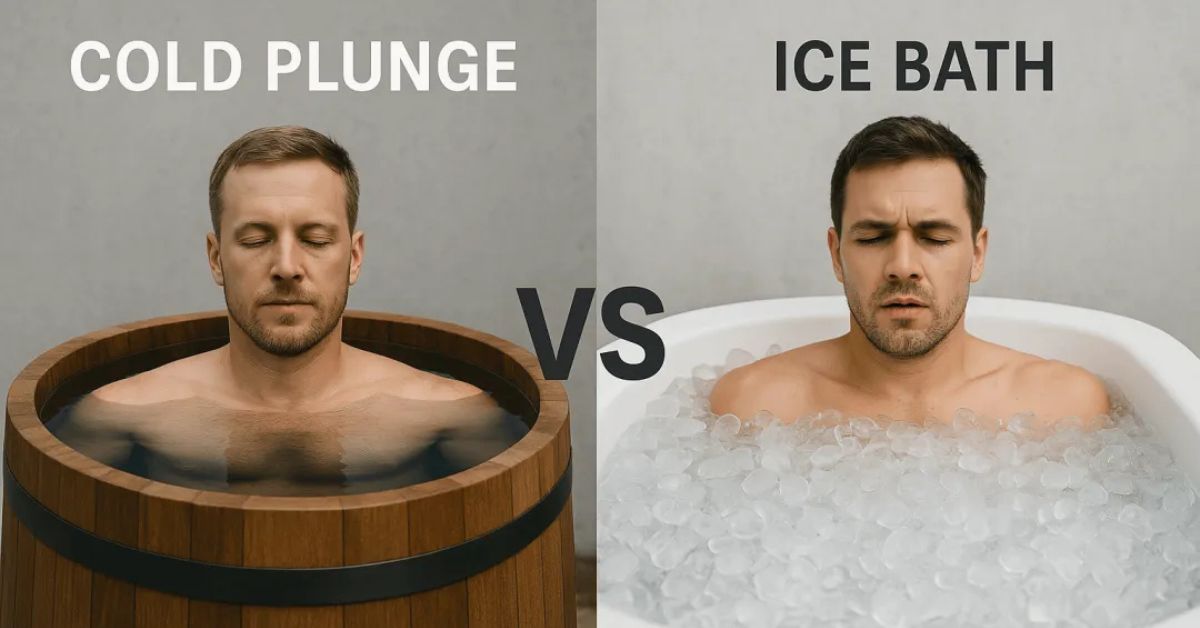Ever wondered which cold therapy method packs a bigger punch—cold showers or cold plunges?
Athletes, biohackers, and wellness enthusiasts swear by cold exposure for its benefits, from boosted recovery to mental resilience. But which method delivers better results? And how do you choose the right one for your lifestyle?
In this deep dive, we’ll compare Cold Shower vs. Cold Plunge head-to-head, examining the science, benefits, and practical considerations. By the end, you’ll know exactly which icy ritual belongs in your routine.
Cold Showers vs. Cold Plunges: Key Differences
Before we weigh the pros and cons, let’s define each method:
-
Cold Shower: Standing under cold (50–60°F) water for 1–5 minutes.
-
Cold Plunge: Submerging your body (usually up to the neck) in icy water (40–55°F) for 1–10 minutes.
While both expose you to cold, the intensity and immersion level differ significantly.
The Science Behind Cold Exposure
Cold therapy triggers vasoconstriction (narrowing of blood vessels), reducing inflammation and flushing metabolic waste. It also spikes norepinephrine, a hormone linked to focus and mood.
Studies show cold exposure can:
✅ Reduce muscle soreness (1)
✅ Improve circulation (2)
✅ Boost mental resilience (3)
✅ Enhance immune response (4)
But does a cold shower deliver the same benefits as a full-body plunge?
Cold Showers: The Beginner-Friendly Option
Pros:
✔ Accessible – No special equipment needed.
✔ Gentler – Easier to tolerate for beginners.
✔ Convenient – Fits into daily showers.
Cons:
❌ Less intense – Limited full-body immersion.
❌ Shorter duration – Harder to stay in for long periods.
Best For:
-
Newcomers to cold therapy
-
People seeking a quick energy boost
-
Those with limited space or budget
Expert Tip: Start with 30 seconds of cold at the end of your shower and gradually increase.
Cold Plunges: The Ultimate Cold Therapy
Pros:
✔ Full-body immersion – More effective for recovery (5).
✔ Deeper cold exposure – Stronger metabolic and hormonal response.
✔ Customizable – Adjust temperature and duration.
Cons:
❌ Expensive – Requires a plunge tub or natural cold water source.
❌ Harder to tolerate – Not ideal for beginners.
Best For:
-
Athletes and serious recovery seekers
-
People with chronic inflammation
-
Those committed to long-term cold therapy
Expert Tip: Aim for 3–5 minutes at 50–55°F before progressing to colder temps.
Which One Wins?
| Factor | Cold Shower | Cold Plunge |
|---|---|---|
| Ease of Use | High | Moderate |
| Cost | Free | $100–$5,000+ |
| Effectiveness | Moderate | High |
| Recovery | Good | Excellent |
Verdict:
-
Choose cold showers if you want a simple, daily habit.
-
Opt for cold plunges if you’re serious about recovery and performance.
How to Get Started Safely
For Cold Showers:
-
Finish your normal shower with 30 seconds of cold.
-
Gradually increase to 2–5 minutes.
-
Breathe deeply to manage the shock.
For Cold Plunges:
-
Start with 50–55°F water for 1–2 minutes.
-
Use a timer to avoid overexposure.
-
Warm up naturally afterward (no hot showers immediately).
Warning: Avoid cold exposure if you have heart conditions or Raynaud’s disease.
Final Thoughts: Cold Shower vs. Cold Plunge
Both cold showers and cold plunges offer unique benefits. If you’re testing the waters (literally), start with showers. If you’re chasing peak performance, a cold plunge may be worth the investment.
The best choice? The one you’ll stick with consistently.
Now, over to you—will you brave the cold shower or take the full plunge?










